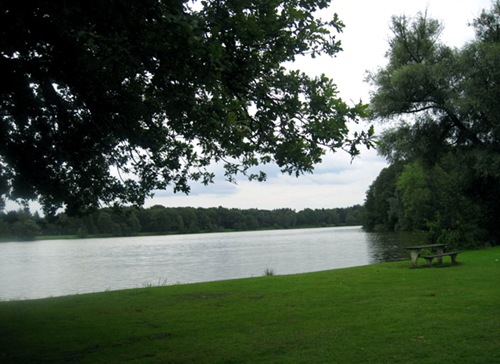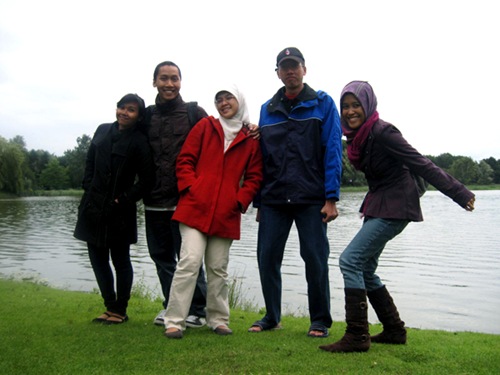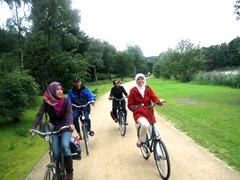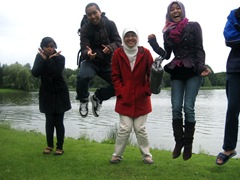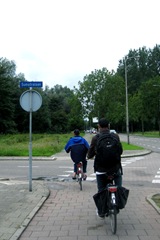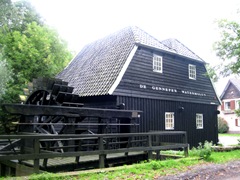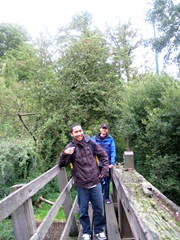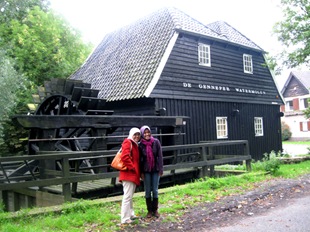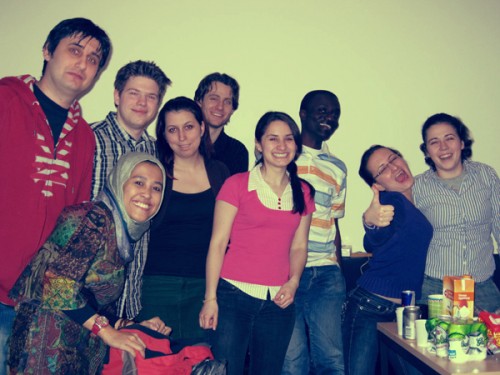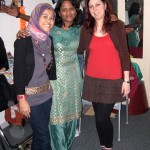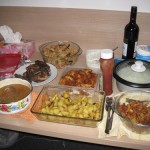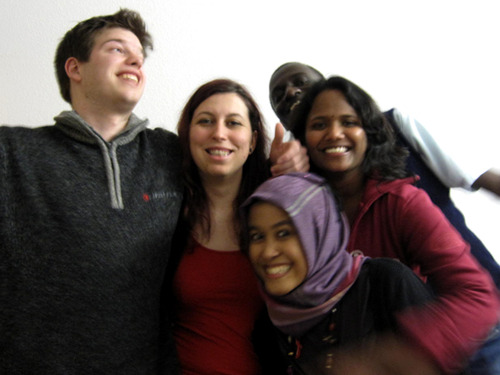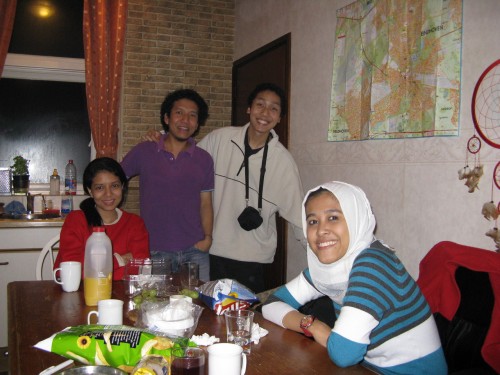I was invited to a rare cultural event called Indonesia Night (which was quite rare in Eindhoven; as most cultural events happened in Den Haag, Rotterdam, Utrecht, or Amsterdam). The event was held for the purpose of introducing the Indonesian culture to some Dutch students (majoring in chemical engineering) who were gonna do a study tour to some parts of Indonesia.
The event was started with a very interesting presentation by Prof. Nas from Universiteit Leiden about the symbols of many places in Indonesia. He did an extensive research about this topic in many cities, particularly in Jakarta, Jogjakarta, Denpasar, Bukittinggi, and Banda Aceh.
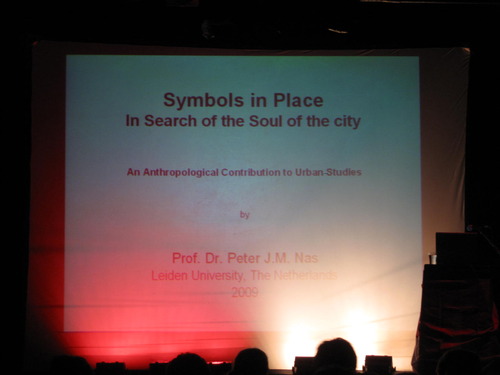
Prof. Nas described Jakarta’s 4 tiered symbolism. The city was first built during the Dutch colonialism time and was centered in what was now Kota (or city center) which was filled with European architectures. During the Old Order (Soekarno’s era), many huge monuments were built, including Monas, West Irian Liberation Statue, and Dirgantara Monument. According to Prof. Nas, Soekarno, who was an architect himself, tried to “neutralized” the city by building these monuments. There were many Dutch or European buildings during that time and Soekarno wanted to display the Indonesian presence or nationalism symbols among these buildings. The New Order era (Soeharto’s) also saw the creation of monuments, one of them was the Sacred Pancasila Monument. In the 1990’s, Jakarta underwent a number of major construction projects; as a result, many high rise buildings started to rise up.
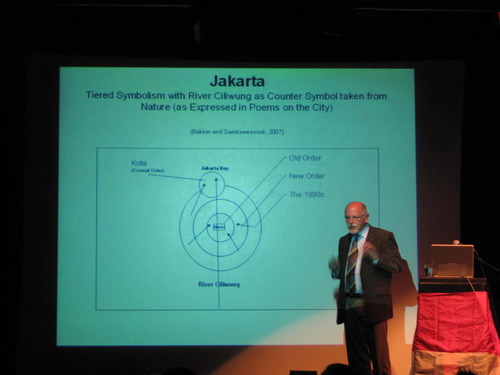
Moving on from Jakarta to Denpasar, the Professor also explained how the traditional Balinese house was constructed. The house was largely consists of a collection of individual separated structures, including the family temple, sleeping pavilion, kitchen, and many more. These structures were located inside a high-walled compound and were organized in such a way that complied to the Tri Angga concept which the Balinese believed. The concept described the three parts: the high (which referred to the sacred mountains or hills), the middle (land), and the low (sea). In terms of the Balinese house, the high referred to the temple, the middle referred to pavilions where they lived, and the sea referred to the kitchen and so on. Prof. Nas even mentioned that the Balinese slept with their head pointing to the direction of the sacred mountain 🙂 This was an interesting concept that I didn’t know about!
After the presentation from an expert, two students gave a presentation about Indonesia. One was a friend of mine, Qonita, who represented Indonesian students who lived in the Netherlands. And the other was a Dutch student who had the chance to live in Indonesia. Both of them gave very interesting and entertaining presentations which I enjoyed very much!
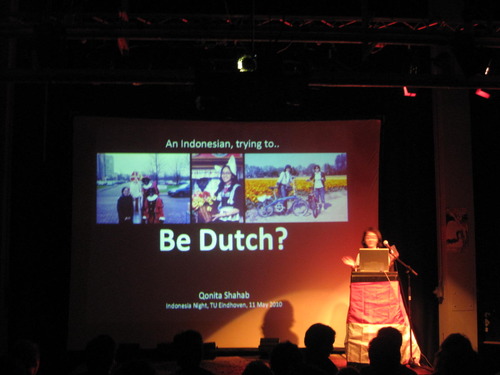
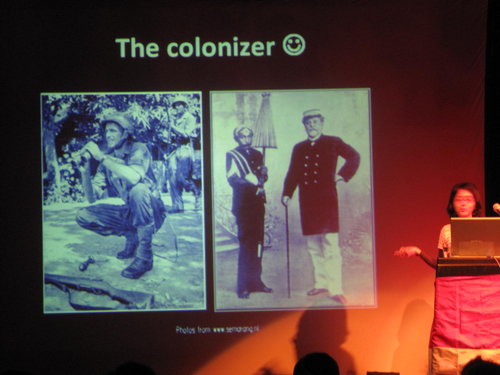
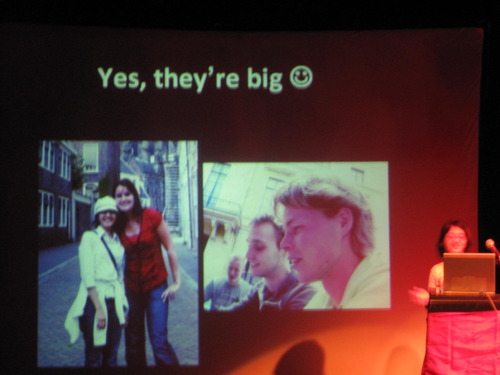
These are the summary of the presentations that they both presented:
- One thing that really stands out about Indonesian people is that we’re really FRIENDLY! Our door is literally opened to anyone. Guests can come unannounced and we’re always ready and happy to receive them to our house. We’re very generous and wants to show our warm hospitality to our guests. When the guests come or are invited to our house, we expect them to eat (and by that we mean HEAVY MEALS are awaited to be served). This is rather different with Dutch. Making appointments are necessary if you want to visit a Dutch friend in his or her house. Visiting Dutch people during dinner time is a big NO-NO. This is considered a family time for them and they are for certain have no foods left for you; because they cook only for the number of people present on the table 🙂 (whilst Indonesians tend to cook more foods, in case somebody else visits). When you visit a Dutch house, expect light foods, coffee or tea, and no more. Of course, nowadays Dutch people interact with many people from different cultures, so some of them behave differently 🙂
- Dutch people are very OPEN. They just don’t hesitate to say what’s inside their heads without considering the feeling of others. On the other hand, many Indonesians, especially the “true” Javanese, aren’t very open. They’re too polite so they try not to hurt other people’s feelings. As a result, they’re not able to say what they really have in mind. They say “yes”, although they’re quite hesitant about it (but they’re hesitant to say “no”).
- Dutch are surprisingly huge. They’re the tallest people in the world. Even the women are very tall! They are white too and as Qonita said: “have pink skin”. LOL. All the western people, including Dutch, love tanned skin, while the Asians, including the Indonesians, would prefer a fair skin (except me, I’m so glad to have this skin color!). The Dutch presenter was actually surprised to find that there was a whitening lotion in Indonesia! 😛 People were obsessed to get white and they would praise her white skin color. In contrast, whitening lotion is nowhere to be found in the Netherlands. There’s a lotion that makes your body tanned or glowing though. Haha!
I was so glad I came to this event! I didn’t expect that it was gonna be this interesting! Knowing other people’s perspectives about your own country was always fascinating. I learnt many things and I had so much fun! The poco-poco dance turned out to be really great and many people took part too 😉
